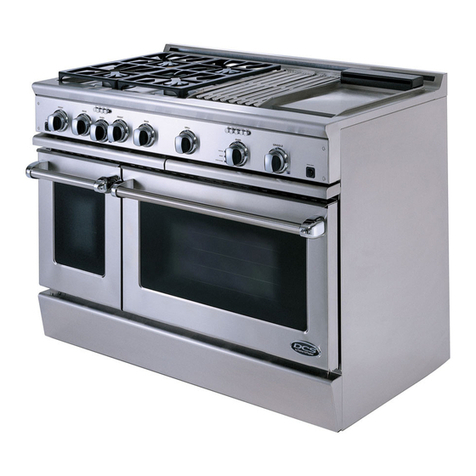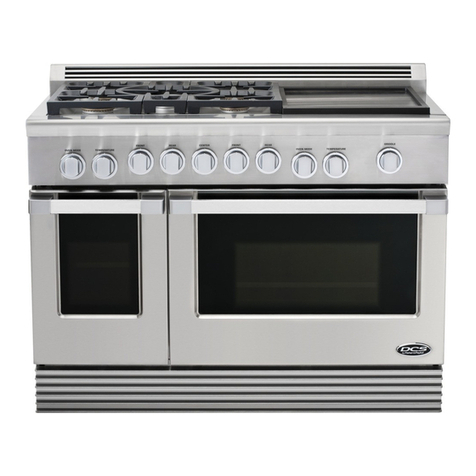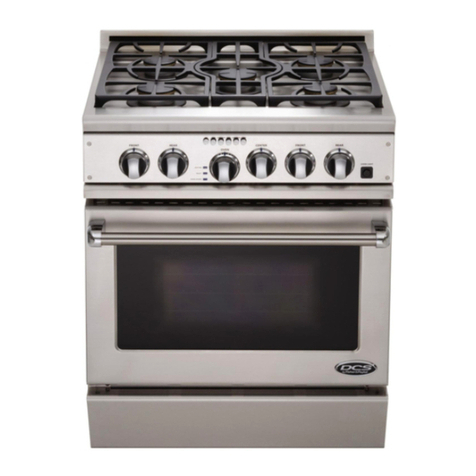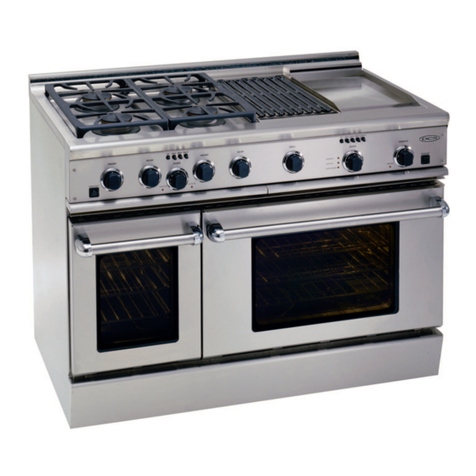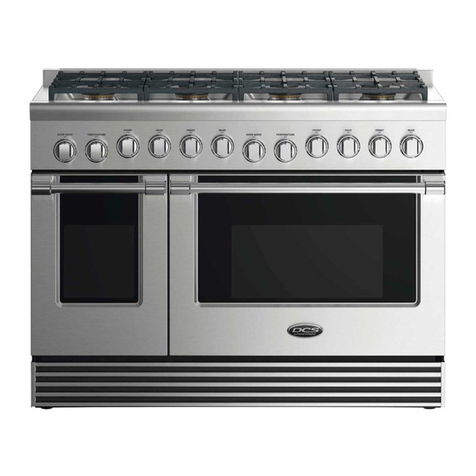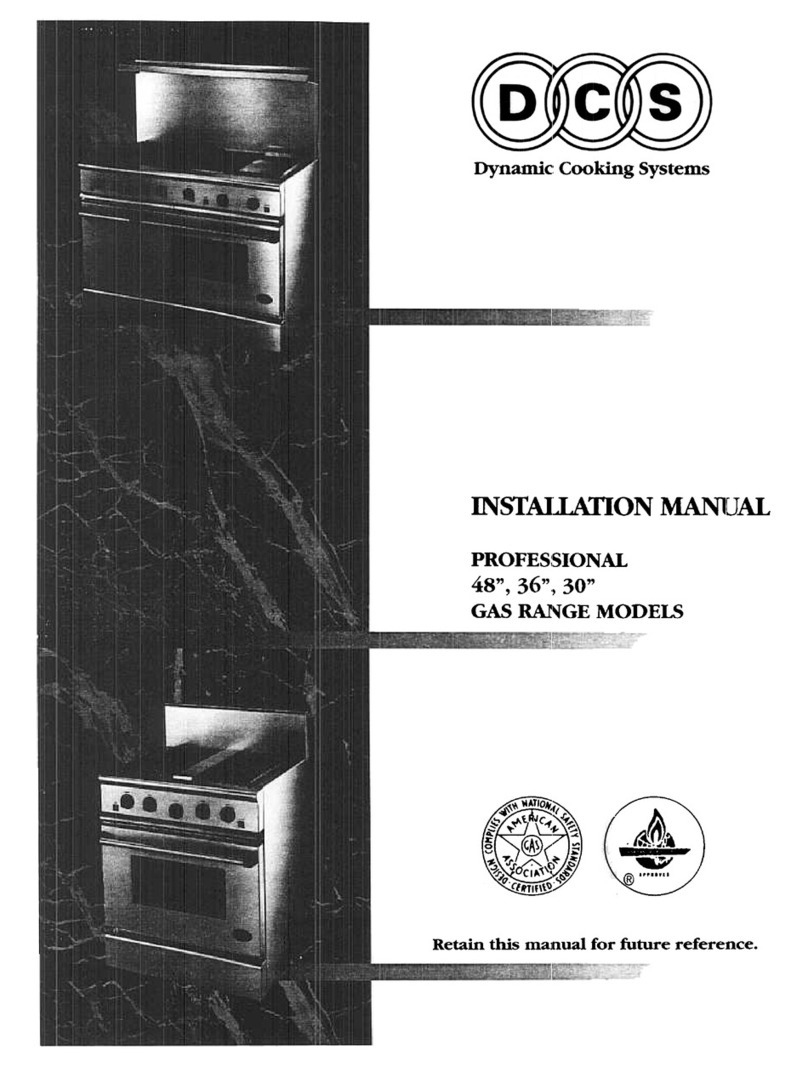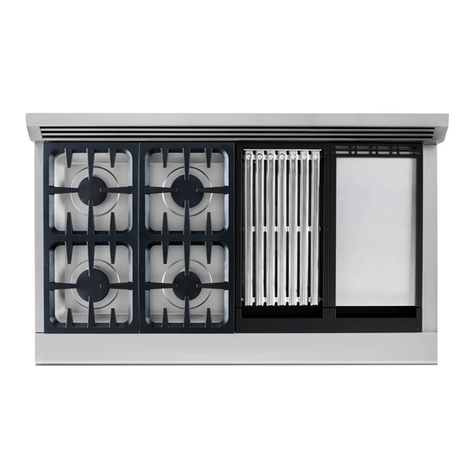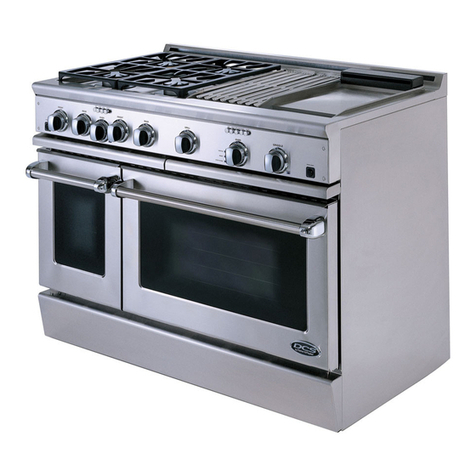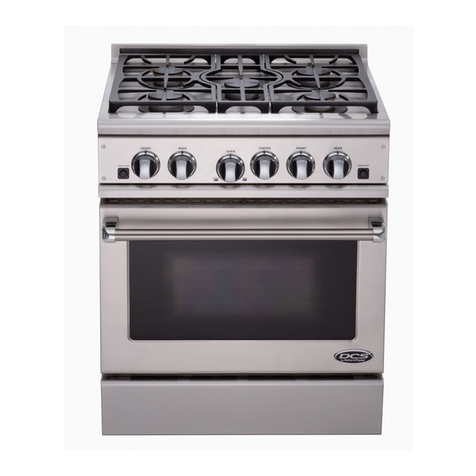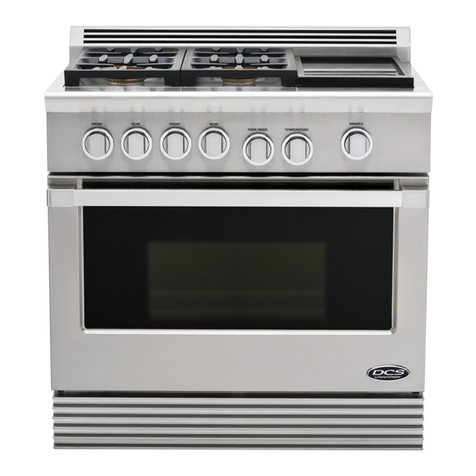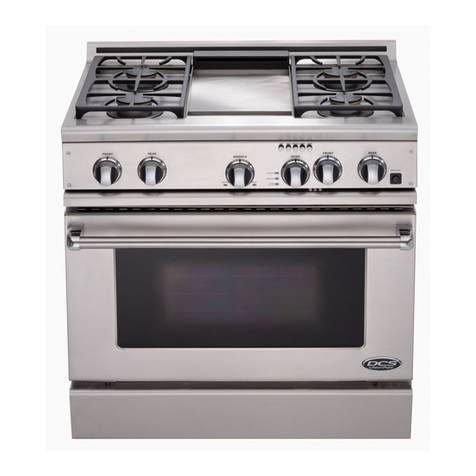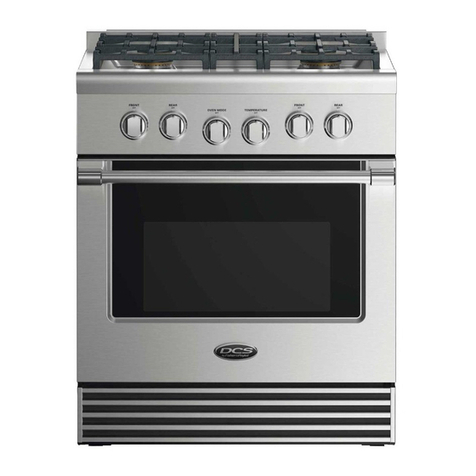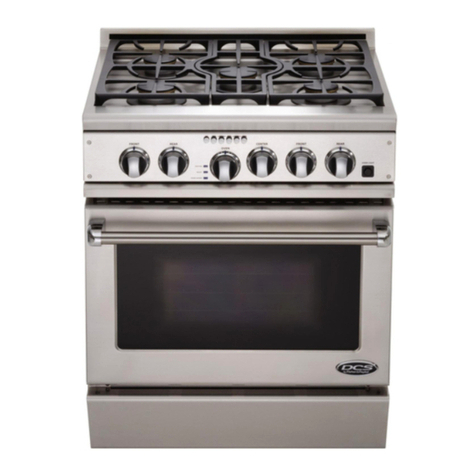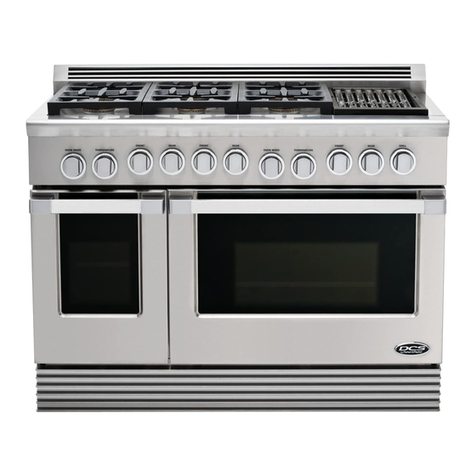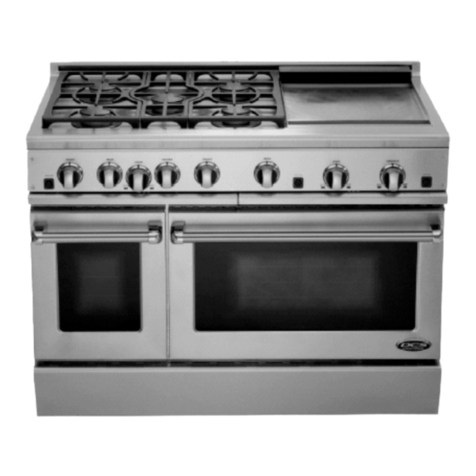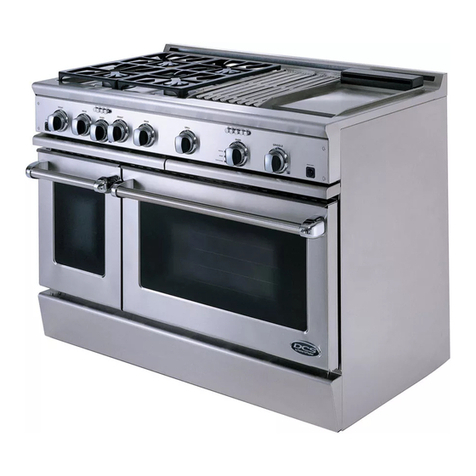SAFETY PRACTICEAND PRECAUTIONS
•Be certain to use only dry pot holders:moist or damp pot holders on hot surfaces may cause burns
from steam. Do not usea towel or other bulky cloth in place of pot holders. Do not let pot holders
touch hot burners, or burner grates.
•For personal safety, wear proper apparel. Loose fitting garments or hanging sleeves should never
be worn while using this appliance. Some synthetic fabrics are highly flammable and should not
be worn while cooking.
•Do not usealuminum foil to line any part of the oven or cooktop. Using a foil liner could result in
a fire hazard, or the obstruction of the flow of combustion and ventilation air. Foil isan excellent
heat insulator and heat will be trapped underneath it. This trapped heat can upset the cooking
performance and can damage the finish of the oven or the cooktop parts.
,/_ WARNING:
This appliance is for cooking. Based on safety considerations, never use the
oven or cooktop to warm or heat a room. Also, such use can damage the
cooktop or oven parts.
• When using the cooktop:Do not touch the burner grates or the immediate surrounding area. Areas
adjacent to the burners may become hot enough to cause burns.
•When using the oven: Do not touch the interior surfaces of the oven,the exterior area immediately
surrounding the door or the back trim. The surfaces directly above the oven door may be hot ifthe
oven has been operated with the door open, or if something hasprevented the door from sealing.
•Never leave the cooktop unattended when using high flame settings. Boil overs cause smoking
and greasy spill overs that may ignite. More importantly, if the burner flames are smothered by a
severe boil over which effects the igniter, unburned gas will escape into the room.
•Only certain types of glass,heat-proof glass-ceramic, ceramic, earthen ware,or other glazes utensils
are suitable for cooktop use. This type of utensil may break with sudden temperature changes. Use
only on low or medium flames settings according to the manufacturer's directions.
• Do not heat unopened food containers; abuild up of pressure may cause the container to burst.
• During cooking, set the burner control so that the flame heats only the bottom of the pan and does
not extend beyond the bottom of the pan. This could heat and/or melt the handles.
•Alwaysuseutensilsthathaveflatbottomslargeenoughtocovertheburner.Theuseof undersized
utensils will expose a portion of the flame to direct contact and may result in ignition of clothing.
• To minimize burns, ignition of flammable materials and unintentional spill overs,position handles
of utensils inward so they do not extend over adjacent work areas, cooking areas,or the edge of the
cooktop.
• Hold the handle of the pan to prevent movement of the utensil when stirring or turning food.
•Grease Is Flammable. Let hot grease cool before attempting to handle it. Avoid letting grease
deposits collect around the cooktop burners. Clean after each use or boil over.
•For proper lighting and performance of the cooktop burners, keep the burner ports clean. It may
be necessary to clean these when there is a boil over or when the burner does not light, even
though the electronic igniters click.
• Clean the cooktop with caution. Avoidsteamburns;donotuseawetspongeorclothtocleanthe
cooktop while it is hot. Some cleaners produce noxious fumes if applied to a hot surface. Follow
directions provided by the cleaner manufacturer.
• Be sure all the range and/or cooktop controls are turned offand the appliance is cool before using
any type of aerosol cleaner on or around the appliance. The chemical that produces the spraying
action could, in the presence of heat, ignite or cause metal parts to corrode.






